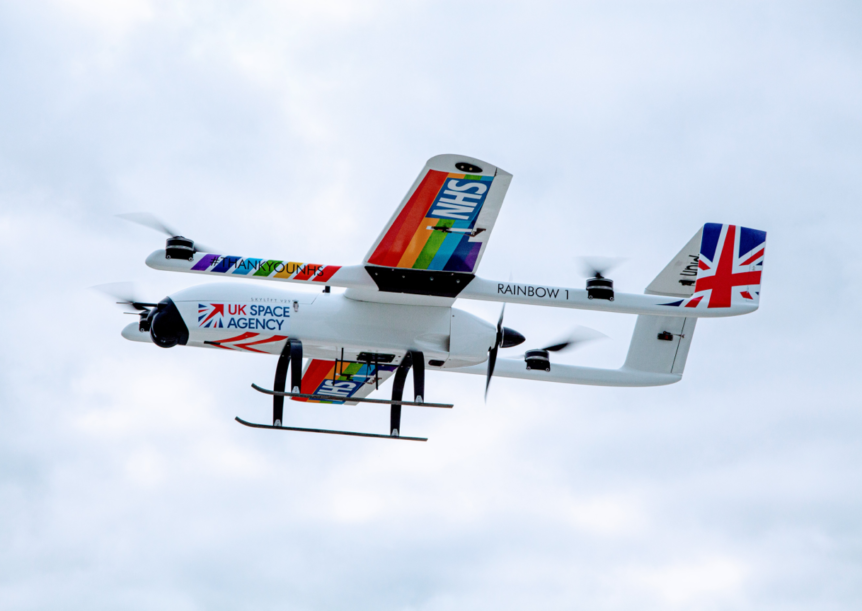Skylift Skylift is an all-British drone system supplier being used by the National Health Service (NHS) to deliver prescription medications in the UK in partnership with Apian. Jessica Reed, reporting in Aviation Today, explains one of Skylift’s unmanned aerial vehicles (UAVs) with vertical take-off and landing (VTOL) capabilities demonstrated its ability to fly medical supplies between Portsmouth on England’s southern coast and the Isle of Wight. According to Distansias.com, “The straight line flying distance from Ryde [on the] Isle of Wight [is] 6.62 miles or 10.66 kilometers.” This can take an hour or so by boat, but only minutes by drone, especially a fast one like those used by Skylift, which apparently designs and builds the machines with specific missions in mind. Skylift has partnered with Apian, “a medical drone startup,” and delivered the first drone delivery of prescription pharmaceuticals in the UK with Boots, a drug store chain. In the near future Skylift drones will deliver chemotherapy drugs from …
Titan Aerospace and Its Low-Flying Satellites
Ken Rentmeester, a regular reader of the blog, shared a news item from the IEEE (Institute of Electrical and Electronics Engineers) Spectrum. Calling Titan Aerospace’s Solara unmanned aircraft “atmospheric satellites,” the article gives a brief history of solar-powered craft, including the Boucher brothers’ Sunrise I, the first solar-powered airplane in 1974, Paul MacCready Jr.’s first piloted solar-powered flight in 1980, and the current world’s endurance record for unmanned, solar-powered flight by the QinetiQ Zephry in 2010. That airplane follows the look of the Boucher’s early effort, and Titan’s examples look a great deal like scaled-up versions of FAI F5-type models which rely on electric self-launching, rapid climbs and extreme flight capabilities to win contests. Despite great successes such as Zephyr’s, there so far has been no commercial market for this type of aircraft. Titan hopes to overcome shortcomings that prevented broader acceptance for its predecessors. These included limited photovoltaic capabilities, poor battery endurance, and fragile airframes, which were simply scaled-up …

